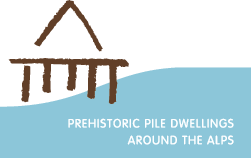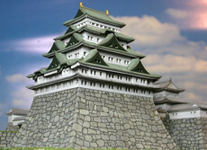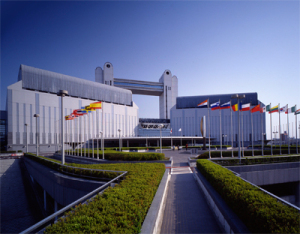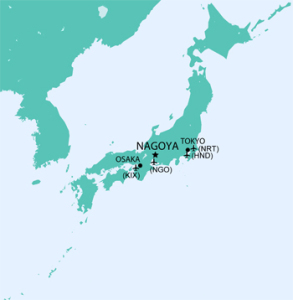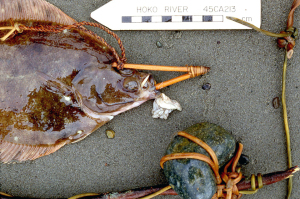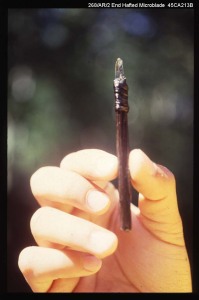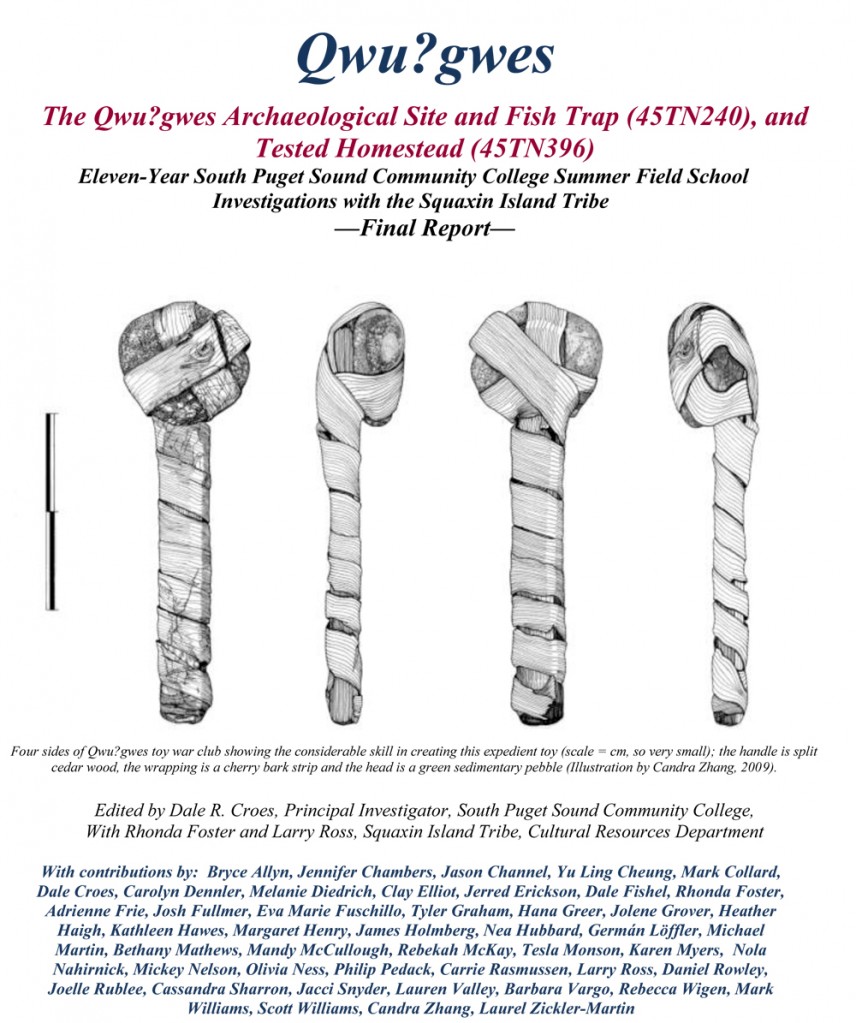Renata Huber sent this attached poster about a proposed neolithic fishing lodge at Cham-Eslen (Canton of Zug, Switzerland), which they presented at the international conference: Culture, Climate and Environment Interactions at the Prehistoric Wetland Sites conference 11-14 June 2014 at Bern, Switzerland: https://www.academia.edu/7327351/Renata_Huber_Andr%C3%A9_Rehazek_2014_A_Neolithic_Fishing_Lodge_at_Cham-Eslen_Canton_of_Zug_Switzerland Interesting bound net sinker cobbles and some net fragments have been found. Twenty net weights were found with lime bast still attached. Two or even three (?) log boats were found next to the single house feature, with one salvaged in 2013.
Similar bound, plain cobble, anchor stones are found in wet sites along the Northwest Coast, such as those wrapped with cherry bark from the Hoko River site. Also a spruce twig net and end hafted and bound quartz crystal microblades were recovered. See these artifacts in the Hoko River digital image archive as discussed under NewsWARP Announcements: Hoko River Archaeological Site Complex Digital Archive
Renata recently sent a paper on the site in German. This composite tool with an elaborately bound handle was found at the site (pictured here). The paper can be obtained here: Cham-Eslen (Kanton Zug, Schweiz):ein jungneolithisches Haus mit (fast) allem Drum und Dran?Taphonomische Aspekte einer Seeufersiedlung .
Please submit reports in any language on PDFs or .DOCs. Here is an English summary of the paper too:
Taphonomic analyses carried out on wetland settlements illustrate just how much evidence is missing from dryland settlements. Moreover, various opportunities exist in the areas of macroscopic and even more so in microscopic analysis. These advantages are outlined using the lakeside settlement of Cham-Eslen as an example. The settlement is suitable in many ways for taphonomic examinations: the site consists of a single house, which was situated on an island (today submerged in the lake) and according to dendrochronological dates was probably inhabited for approximately 10 years. It has yielded well-preserved and unusual ï¬nds. From a macroscopic point of view, the distribution patterns of the heavier ï¬nds are used to ascertain what might be considered in situ (in other words, still located where they were originally deposited). Micromorphology is used to ascertain the state of preservation. Different areas with various states of preservation were identiï¬ed in the samples by applying several criteria. These have provided evidence for the absence of limnic elements and bioturbation traces, as well as the presence of ash and evidence of trampling. A number of deeper cores served to investigate whether the site is, in fact, an island or whether it is the product of a process of erosion. The results revealed that the house in Cham-Eslen was built on a dry island, the centre of which was not affected by flooding during its occupation. Therefore, we may assume that the features in this area have survived in situ. However, the outer areas of the house do, in fact, show traces of regular soil disturbances.

